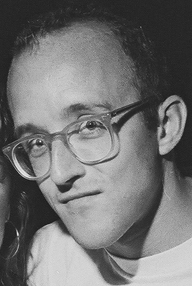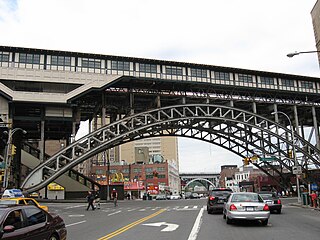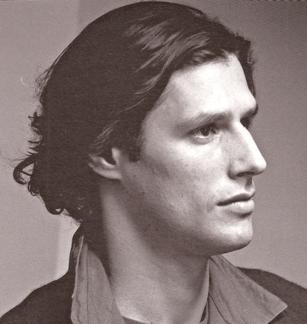
Charles Henry Alston was an American painter, sculptor, illustrator, muralist and teacher who lived and worked in the New York City neighborhood of Harlem. Alston was active in the Harlem Renaissance; Alston was the first African-American supervisor for the Works Progress Administration's Federal Art Project. Alston designed and painted murals at the Harlem Hospital and the Golden State Mutual Life Insurance Building. In 1990, Alston's bust of Martin Luther King Jr. became the first image of an African American displayed at the White House.

Pablo Ruiz Picasso was a Spanish painter, sculptor, printmaker, ceramicist, and theatre designer who spent most of his adult life in France. One of the most influential artists of the 20th century, he is known for co-founding the Cubist movement, the invention of constructed sculpture, the co-invention of collage, and for the wide variety of styles that he helped develop and explore. Among his most famous works are the proto-Cubist Les Demoiselles d'Avignon (1907) and the anti-war painting Guernica (1937), a dramatic portrayal of the bombing of Guernica by German and Italian air forces during the Spanish Civil War.

Keith Allen Haring was an American artist whose pop art emerged from the New York City graffiti subculture of the 1980s. His animated imagery has "become a widely recognized visual language". Much of his work includes sexual allusions that turned into social activism by using the images to advocate for safe sex and AIDS awareness. In addition to solo gallery exhibitions, he participated in renowned national and international group shows such as documenta in Kassel, the Whitney Biennial in New York, the São Paulo Biennial, and the Venice Biennale. The Whitney Museum held a retrospective of his art in 1997.

30 Rockefeller Plaza is a skyscraper that forms the centerpiece of Rockefeller Center in the Midtown Manhattan neighborhood of New York City, United States. Completed in 1933, the 66-story, 850 ft (260 m) building was designed in the Art Deco style by Raymond Hood, Rockefeller Center's lead architect. 30 Rockefeller Plaza was known for its main tenant, the Radio Corporation of America (RCA), from its opening in 1933 until 1988 and then for General Electric until 2015, when it was renamed for its current owner, Comcast. The building also houses the headquarters and New York studios of television network NBC; the headquarters is sometimes called 30 Rock, a nickname that inspired the NBC sitcom of the same name. The tallest structure in Rockefeller Center, the building is the 28th tallest in New York City and the 65th tallest in the United States, and was the third tallest building in the world when it opened.

Harlem–125th Street station is a commuter rail stop serving the Metro-North Railroad's Hudson, Harlem, and New Haven Lines. It is located at East 125th Street and Park Avenue in East Harlem, Manhattan, New York City. The station also serves as an important transfer point between the Metro-North trains and the New York City Subway's IRT Lexington Avenue Line for access to the Upper East Side of Manhattan. It is the only station besides Grand Central Terminal that serves all three lines east of the Hudson River. Trains leave for Grand Central Terminal, as well as to the Bronx and the northern suburbs, regularly.

Aaron Douglas was an American painter, illustrator, and visual arts educator. He was a major figure in the Harlem Renaissance. He developed his art career painting murals and creating illustrations that addressed social issues around race and segregation in the United States by utilizing African-centric imagery. Douglas set the stage for young, African-American artists to enter the public-arts realm through his involvement with the Harlem Artists Guild. In 1944, he concluded his art career by founding the Art Department at Fisk University in Nashville, Tennessee. He taught visual art classes at Fisk University until his retirement in 1966. Douglas is known as a prominent leader in modern African-American art whose work influenced artists for years to come.

Guernica is a large 1937 oil painting by Spanish artist Pablo Picasso. It is one of his best-known works, regarded by many art critics as the most moving and powerful anti-war painting in history. It is exhibited in the Museo Reina Sofía in Madrid.

The Studio Museum in Harlem is an American art museum devoted to the work of artists of African descent. The museum's galleries are currently closed in preparation for a building project that will replace the current building, located at 144 West 125th Street between Adam Clayton Powell Jr. Boulevard and Lenox Avenue in Harlem, Manhattan, New York City, with a new one on the same site. Founded in 1968, the museum collects, preserves and interprets art created by African Americans, members of the African diaspora, and artists from the African continent. Its scope includes exhibitions, artists-in-residence programs, educational and public programming, and a permanent collection.

125th Street, co-named Martin Luther King Jr. Boulevard, is a two-way street that runs east–west in the New York City borough of Manhattan, from First Avenue on the east to Marginal Street, a service road for the Henry Hudson Parkway along the Hudson River in the west. It is often considered to be the "Main Street" of Harlem.

Street art is visual art created in public locations for public visibility. It has been associated with the terms "independent art", "post-graffiti", "neo-graffiti" and guerrilla art.

Hale Aspacio Woodruff was an American artist known for his murals, paintings, and prints.
Louis Jessup Delsarte III was an African-American artist known for what has sometimes been called his "illusionistic" style. He was a painter, muralist, printmaker, and illustrator.

Dean Cornwell was a left-handed American illustrator and muralist. His oil paintings were frequently featured in popular magazines and books as literary illustrations, advertisements, and posters promoting the war effort. Throughout the first half of the 20th century he was a dominant presence in American illustration. At the peak of his popularity he was nicknamed the "Dean of Illustrators".

Bruno Fonseca was an American artist who shifted between abstract and figurative styles and worked in both painting and sculpture.

20th-century Western painting begins with the heritage of late-19th-century painters Vincent van Gogh, Paul Cézanne, Paul Gauguin, Georges Seurat, Henri de Toulouse-Lautrec, and others who were essential for the development of modern art. At the beginning of the 20th century, Henri Matisse and several other young artists including the pre-cubist Georges Braque, André Derain, Raoul Dufy and Maurice de Vlaminck, revolutionized the Paris art world with "wild", multi-colored, expressive landscapes and figure paintings that the critics called Fauvism. Matisse's second version of The Dance signified a key point in his career and in the development of modern painting. It reflected Matisse's incipient fascination with primitive art: the intense warm color of the figures against the cool blue-green background and the rhythmical succession of the dancing nudes convey the feelings of emotional liberation and hedonism.

Founded in the 17th century as a Dutch outpost, Harlem developed into a farming village, a revolutionary battlefield, a resort town, a commuter town, a center of African-American culture, a ghetto, and a gentrified neighborhood.
Levi Ponce is an American artist noted for his public portrait murals throughout urban areas of the San Fernando Valley and Southern California.
The 100 Gates Project in New York City, New York is an art-based organization that was founded in 2014, by Natalie Raben under the umbrella of the Lower East Side Partnership. The 100 Gates Project began as an effort to help community revitalization in Manhattan. The mission of the project was to enhance the beauty of the neighborhoods by working exclusively with local artists and merchants to paint murals on the metal security gates of participating stores. In 2014, the project began creating murals in the Lower East Side, New York and set out to paint a total of 100 security gates. As of 2016, the project has surpassed its name and is currently working towards creating over 100 more murals in East Harlem and Downtown Staten Island combined. Natalie Raben and Ayana Hosten currently run the project by reaching out to local artists and merchants.

Many artworks related to the Black Lives Matter movement have been created. These works are either seen as a direct tribute to those who have died or more broadly to the movement. Often the pieces are created in the streets as to be more publicly visible. As such several attempts have been made at preserving the art created in protest on the basis of their artistic merit and cultural significance. Increasingly, the erasure of the artwork has been a problem for preservationists. As such, the artworks below represent a fraction of the works created.

The American People Series #20: Die is an oil on canvas painting made by American artist Faith Ringgold in 1967. Inspired by Pablo Picasso's painting Guernica (1937) and painted amidst the riots and uprisings of the 1960s, Die is a two-panel work depicting a group of Black and white men, women, and children, most of whom are wounded or covered in blood, variously fighting, fleeing, or dying against an abstract grey background. The piece has been extensively cited as among Ringgold's most important and iconic artworks.
















